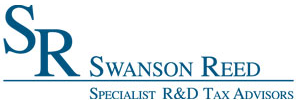New Hampshire Patent of the Month – June 2023
In the ever-evolving world of digital advertising, understanding user engagement has become a top priority for marketers. Yieldmo, Inc., a pioneer in the field of advertising technology, has recently introduced a novel method for quantifying user engagement. This method promises to revolutionize the way advertisers measure the effectiveness of their campaigns and make data-driven decisions.
The newly developed method involves a series of steps that take place during different time periods and on various computing devices. To begin with, an advertisement is selected for presentation within a webpage loaded on a computing device. The proportion of pixels of the advertisement rendered on the display during two sampling periods is recorded, along with the duration of each sampling period. Using this information, a cumulative pixel exposure metric is calculated, considering the proportion of pixels and the duration of each sampling period.
During a second time period, if the cumulative pixel exposure remains below a predefined threshold, the same advertisement is selected for presentation within a different advertisement slot on a different computing device. This allows advertisers to target multiple devices and reach a wider audience. However, if the cumulative pixel exposure exceeds the threshold, a different advertisement is selected for presentation within a third advertisement slot on yet another computing device.
Yieldmo’s method also includes provisions for tracking user-specific engagement. If the same user accesses multiple devices, the method ensures that the user is consistently exposed to the same advertisement across different devices. This enables advertisers to maintain a cohesive and personalized user experience, ultimately leading to higher engagement rates.
One of the key features of Yieldmo’s method is the use of test periods to refine the engagement metrics. During the test period, a set of instances of the advertisement is served to a population of users, and the viewability data is recorded. This data, along with the corresponding outcomes, is used to derive an outcome model, which associates cumulative pixel exposure with specific outcomes. Based on this model, a threshold cumulative pixel exposure is defined, indicating the level of engagement required to achieve a target outcome.
By implementing this method, advertisers can accurately measure the effectiveness of their advertisements in terms of user engagement. This granular understanding of engagement allows them to optimize their campaigns, allocate resources effectively, and ultimately achieve higher returns on investment.
Advertisers can now move beyond mere impressions and clicks to gain deeper insights into user behavior and preferences. With this deeper understanding, they can create more compelling and targeted campaigns that resonate with their audience.
Are you developing new technology for an existing application? Did you know your development work could be eligible for the R&D Tax Credit and you can receive up to 14% back on your expenses? Even if your development isn’t successful your work may still qualify for R&D credits (i.e. you don’t need to have a patent to qualify). To find out more, please contact a Swanson Reed R&D Specialist today or check out our free online eligibility test.
Who We Are:
Swanson Reed is one of the U.S.’ largest Specialist R&D tax advisory firms. We manage all facets of the R&D tax credit program, from claim preparation and audit compliance to claim disputes.
Swanson Reed regularly hosts free webinars and provides free IRS CE and CPE credits for CPAs. For more information please visit us at www.swansonreed.com/webinars or contact your usual Swanson Reed representative.

















